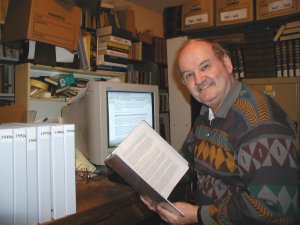
I’m writing a new history of Vancouver and its suburbs. The History of Metropolitan Vancouver will appear in a few months, and will be BIG, detailed, solidly informative and very readable. It covers everything from Bowen Island east to Langley. To be published by Harbour Publishing, this book is the capstone of my writing career.
I’m delighted that the Vancouver Board of Trade is the lead sponsor for the book, and is encouraging local business leaders to join in sponsorship. Each year in the book is sponsorable. And the list of sponsors is growing every day.
– Chuck Davis
Sample Chapters
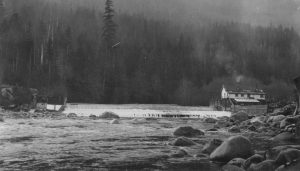
1889
The story of how Vancouver got its water turns out to be interesting, complicated, frequently rancorous and occasionally even funny… carrying the day’s supply home in buckets could be, literally, a pain in the neck. And, as James Morton wrote, “Even the water from a private well at the back of a house was hardly palatable if one contemplated the dead rats so often seen floating on the surface.”
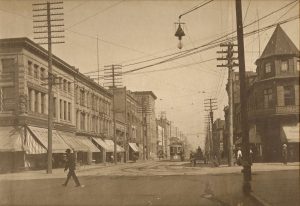
1907
There weren’t many automobiles in Vancouver in 1907 (a five-minute film taken along several downtown streets this year shows precisely one), but there were enough for someone in the Vancouver office of the Imperial Oil Co. to decide that the usual method of fueling them at the time—carrying a sloshing bucket full of gasoline up to the vehicle and pouring it through a funnel into the tank—was somewhat dangerous.
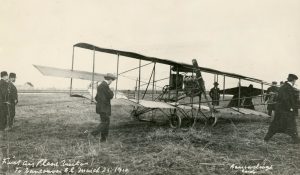
1910
1910 marked a major event in our history. On March 25 the first airplane flight west of Winnipeg took place at the race track at Minoru Park in Richmond. The news electrified the locals, and some 3,500 people showed up to pack the stands. Flying a Curtiss pusher biplane—the engine was in the rear behind the pilot—was a visiting American aviator, Charles K. Hamilton, who put the little craft through its paces, thrilling the spectators…
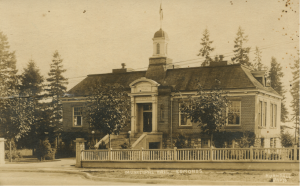
1911
The city got bigger on New Year’s Day. Hastings Townsite, the residents of which had voted the year before to be annexed by Vancouver, officially became part of the city on January 1st. The townsite was a big chunk of land. Superimposed on a map today, it would stretch from Burrard Inlet to East 29th Avenue between Nanaimo Street and Boundary Road….
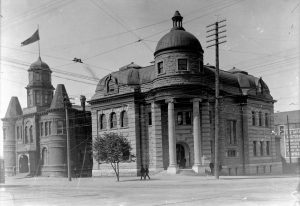
1929
The big story in 1929 for Vancouver was not the Great Depression. The first ominous effects of the crash would begin to be felt by the end of the year, but we wouldn’t begin to feel the real effects until 1930. No, for Vancouver in 1929 it was an explosion in size. On January 1st the amalgamation of Point Grey and South Vancouver came into legal effect, and overnight Vancouver became Canada’s third largest city.
![Captain Frank M. Hawks leaving Vancouver airport for Los Angeles [CVA 99-4103]](https://vancouverhistory.ca/wp-content/uploads/2021/01/a5dcb1b3-9ce8-4455-a053-f1264f686b39-A18198-300x238.jpg)
1931
The city’s links to the outside world strengthened in 1931 with the opening of the Vancouver Airport and Seaplane Harbour July 22—a welcome bright spot during the Depression. Premier Tolmie officiated, and a crowd of 55,000 turned up for the four-day opening ceremonies. The complex covered 192 hectares (474 acres).
![Mayor of Vancouver, Gerry McGeer, speaking at Golden Jubilee opening ceremonies at Brockton Point Grandstand [CVA 94-15]](https://vancouverhistory.ca/wp-content/uploads/2021/01/f298ebda-1e38-4ffa-8244-34dabcb075d8-CVA94-15-300x193.jpg)
1935
On January 2, 1935 Gerry McGeer walked into his city hall office as mayor of Vancouver. He had received more votes in the civic election than any mayor before him, easily defeating L.D. Taylor. McGeer was voted into office on a mandate to fight crime, and to do away with slot machines, gambling, book-making, white slavery and corruption in the police force.
![King George VI and Queen Elizabeth [AM54-S4-: K and Q P1]](https://vancouverhistory.ca/wp-content/uploads/2021/01/27fa33d4-165d-4e25-b7cc-c2b983c77125-A26561-300x236.jpg)
1939
A royal tour of Canada in May was another indication war was brewing. The timing of the tour was deliberate: it served, said one commentator, “as a gentle reminder to English-speaking Canadians of their ties to the motherland and their imperial duty.” King George VI and Queen Elizabeth (later to be known as the Queen Mum) went by train from one end of the country to the other.
![Japanese Canadian men and boys in mess hall, Forestry and Indian building, Building E, during Japanese Canadian internment and relocation [CVA 180-3544]](https://vancouverhistory.ca/wp-content/uploads/2021/01/7865d0ae-aa6b-4c23-9151-c75e561fd6b3-CVA180-3544-300x214.jpg)
1942
1942 began on a solemn note when, on January 14, the Canadian government invoked the War Measures Act. Ottawa announced that all Japanese—Canadian-born or otherwise—would be removed from the west coast to government camps….On February 26 all British Columbia’s Japanese were ordered interned, and in March Exhibition Park in Vancouver became an internment camp. It was closed to the public and turned into a “processing centre” for more than 8,000 Japanese Canadians…
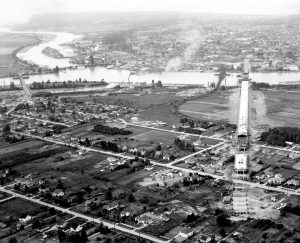
1957
Traffic patterns in Vancouver changed dramatically in 1957. On July 1 the four-lane Oak Street Bridge, on Route 99, opened. Some 1,839 metres long, it became a vital link to Vancouver for Richmond, and vice versa. Says Richmond’s civic web site: “With airplanes beginning to replace trains and ships as the preferred mode of travel, the Vancouver Airport on Sea Island increased in importance.” The new bridge would speed traffic to and from the airport….
Books by Chuck Davis
The History of Metropolitan Vancouver (2009) Harbour Publishing
The Orpheum: Palace of Entertainment (still waiting for a publisher)
Vancouver Then & Now (2001) Magic Light Publishing, Ottawa
Where Rails Meet Rivers: The Story of Port Coquitlam (2000) Harbour Publishing
The Greater Vancouver Book (Editor-in-Chief) (1997) Linkman Press, Surrey
Top Dog! A History of CKNW (1993) Canada Wide Magazines
Reflections: A History of North Vancouver District (1992) Opus Publishing
The Greater Vancouver Appointment Book (1990) New Star Books
Vancouver: An Illustrated Chronology (with Shirley Mooney) (1986) Windsor Publishing
Turn on to Canada! (1983) Douglas & McIntyre; Nelson
Chuck Davis’ 1982 Vancouver Appointment Book (1981) New Star Books
Kids! Kids! Kids! And Vancouver! (with Daniel Wood) (1977) Fforbez Enterprises
Chuck Davis’ Vancouver Appointment Book (1980) New Star Books
The Vancouver Book (General Editor) (1976) J.J. Douglas Ltd.
Two Weeks in Vancouver (with John Ewing) (1976) Government of Canada
Chuck Davis’ Guide to Vancouver (1973, 1975) J.J. Douglas Ltd.
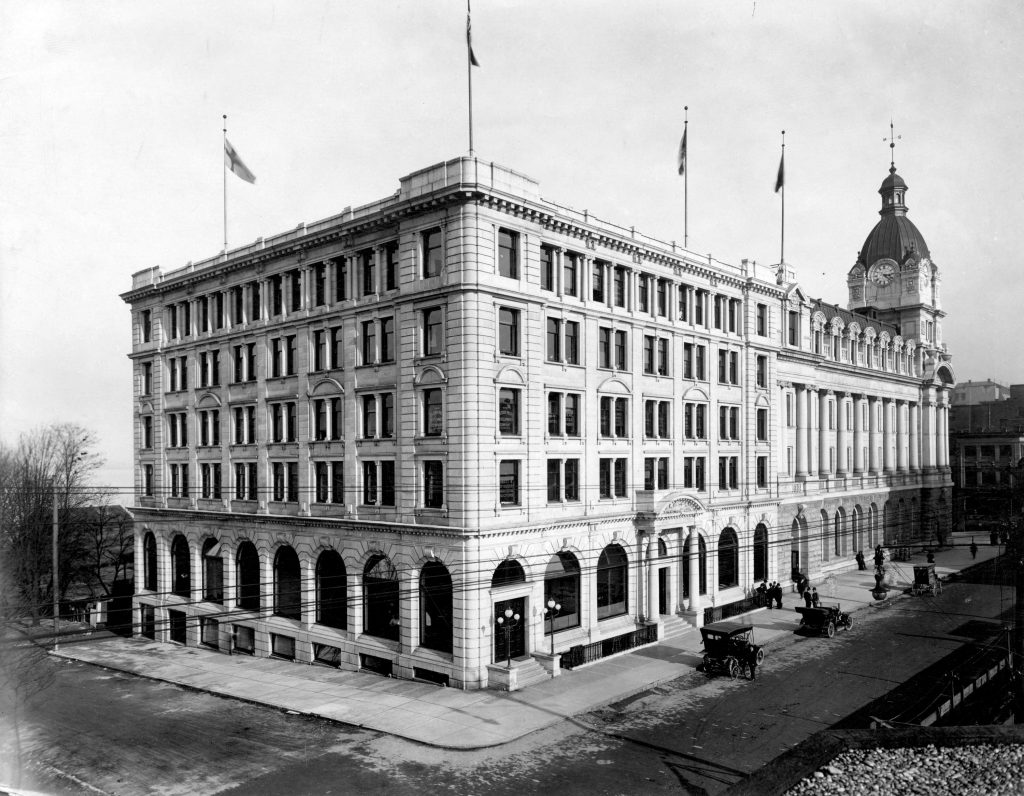
Built in 1909, the Winch Building is now part of Sinclair Centre.
Image: City of Vancouver Archives
